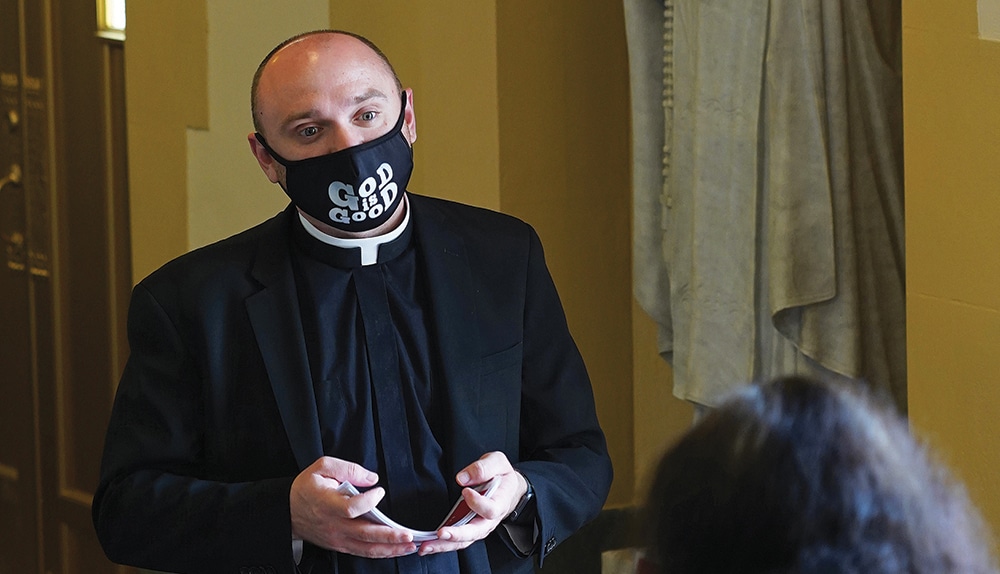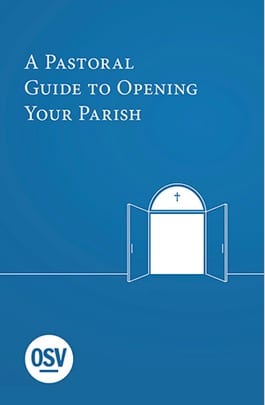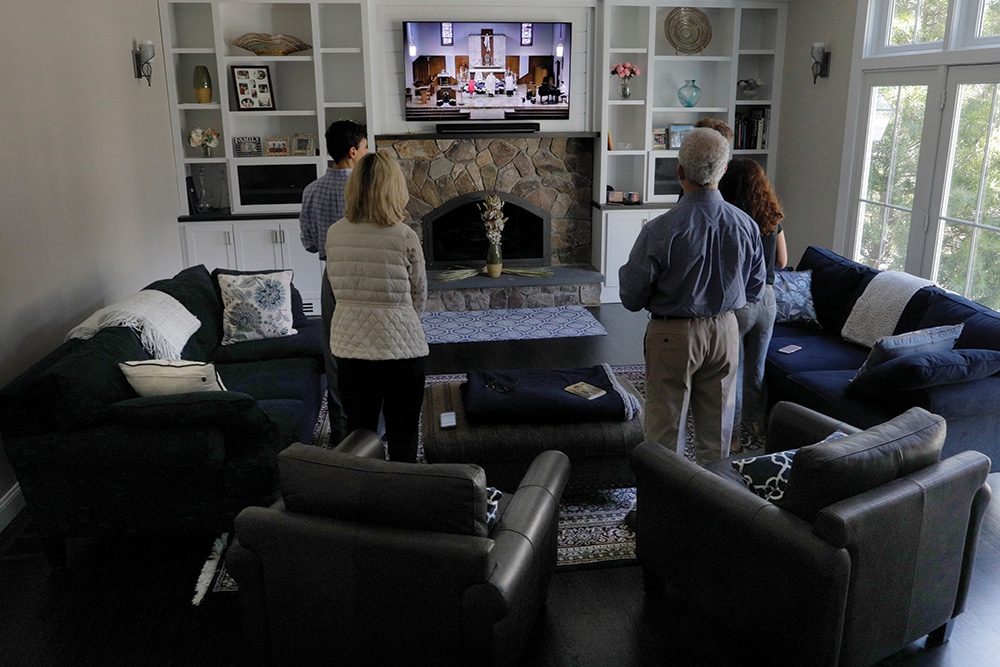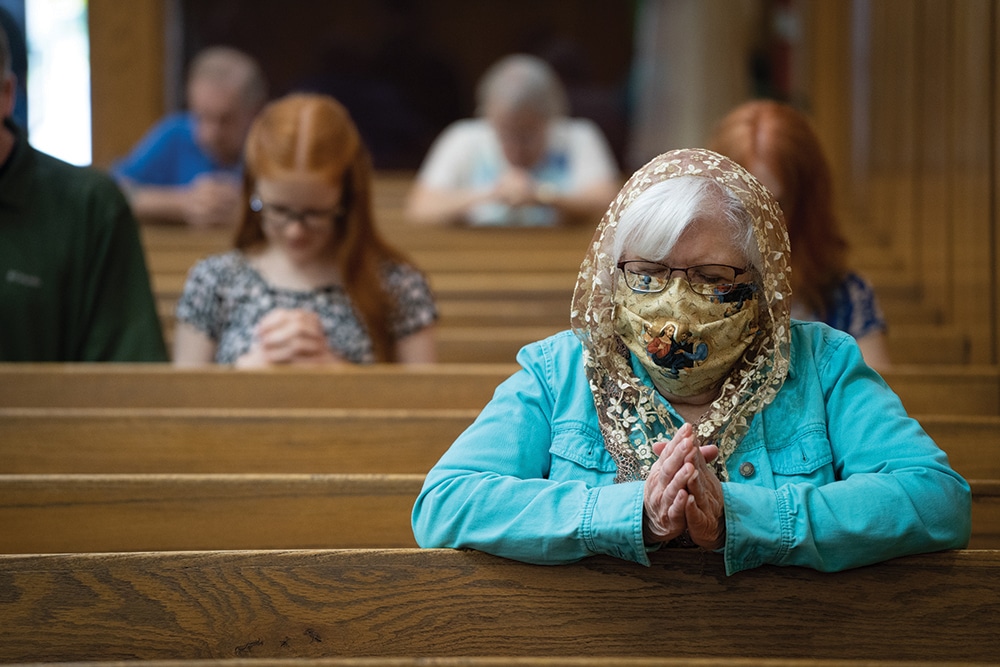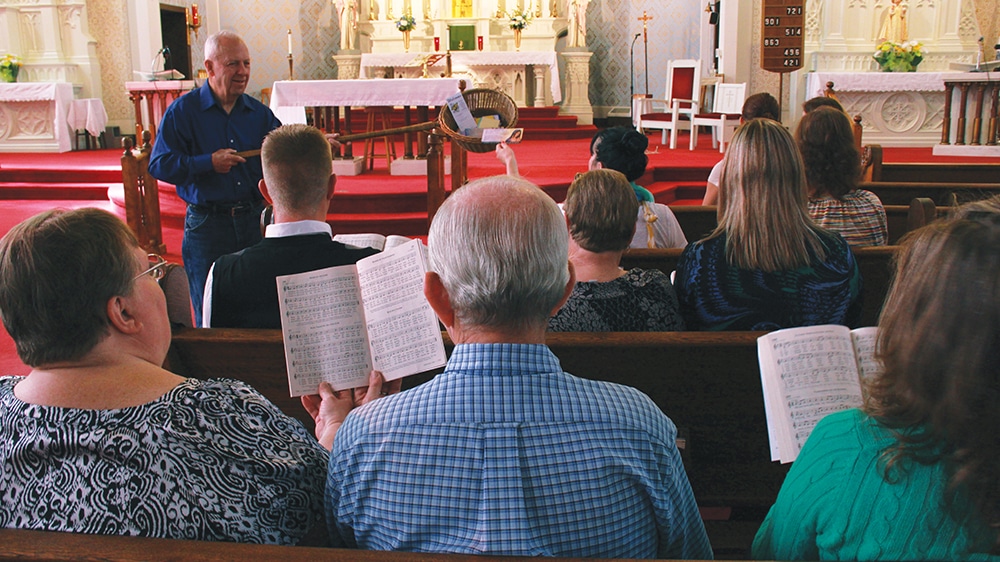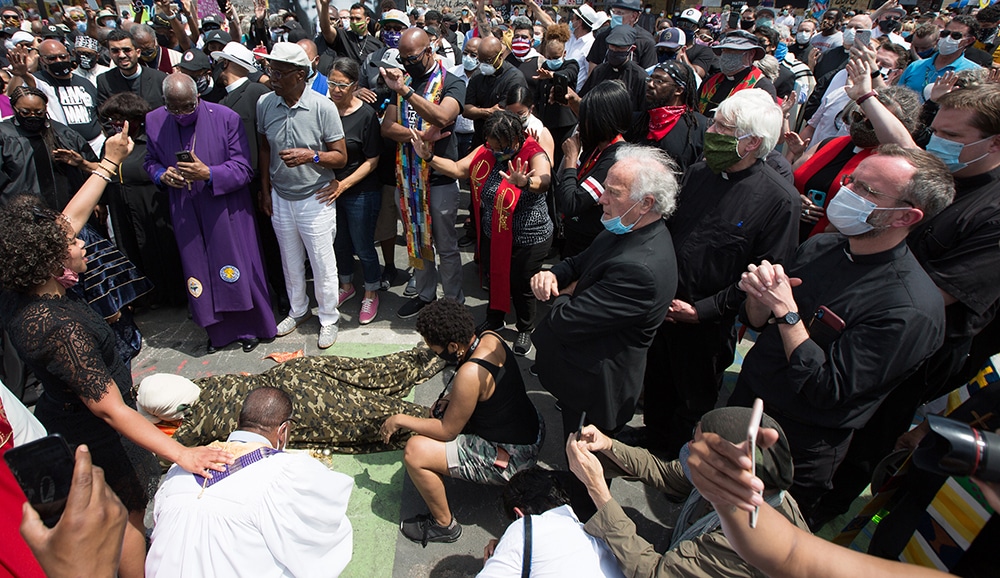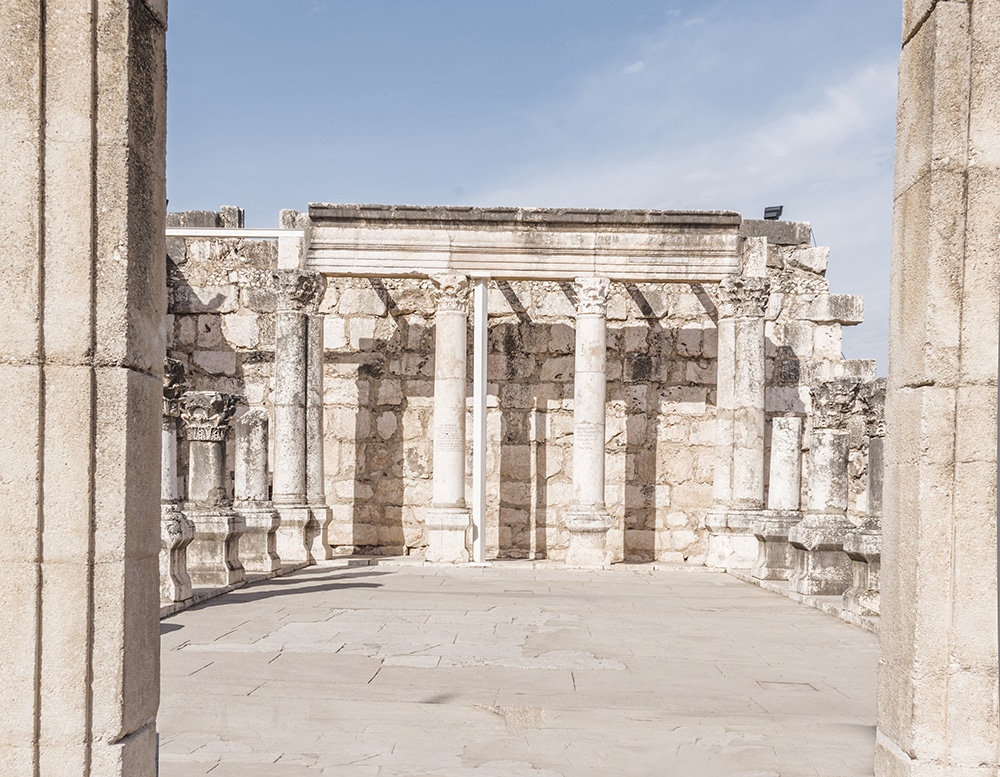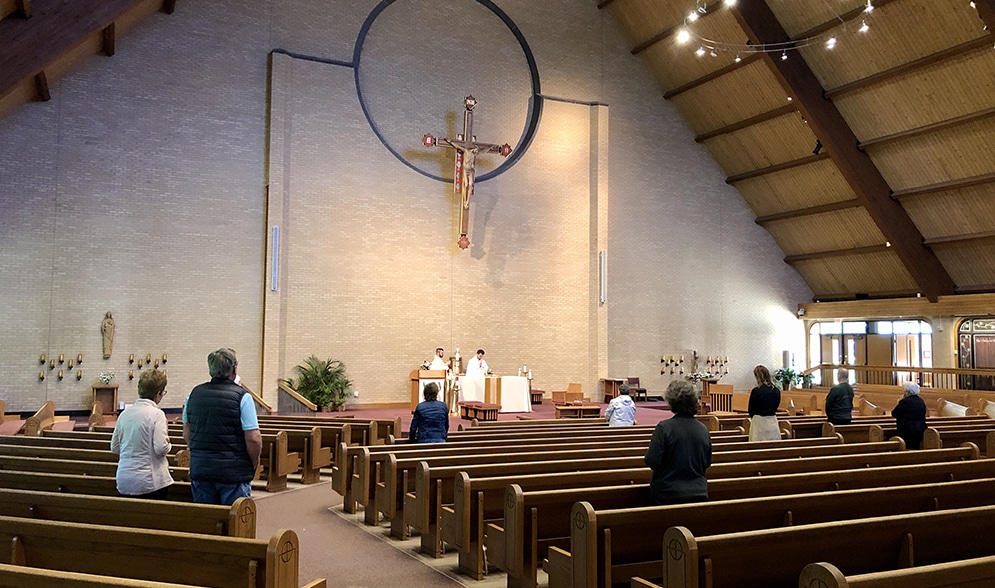After you have gathered the parish leadership together and made the major decisions regarding which services, ministries and functions to reopen and when, it’s time to welcome your parishioners back to the parish. The following are a few key considerations.
Where people are right now
Before the COVID-19 crisis, your parishioners probably fell into one of three categories: actively participating parishioners, who not only attend Mass and other parish activities, but are involved in making sure they happen; faithfully attending parishioners, who attend Mass regularly and might also attend other parish events, but they aren’t yet actively involved as volunteers; and marginally connected parishioners, who are registered in the parish but might not attend regularly.
Read more from our special section ‘Moving Forward in Faith’ here
As states and local communities reopen, we continue to be in a time of uncertainty. Many questions are on people’s minds, such as: “Is it safe to get back to everyday life?,” “Am I still at risk of contracting the virus?,” and “What precautions should I take regarding where I go and what I do there?” Counterbalanced with these questions are the human experiences of cabin fever from not being able to go out, the social isolation and loneliness that many have felt during this time and the desire for children to be able to connect with same-age peers for play and learning.
| Booklet |
|---|
|
This article is included in “A Pastoral Guide to Opening Your Parish,” a new booklet from OSV. As our parishes begin to reopen following local guidelines, the Catholic faithful have many questions and legitimate concerns about what life will look like post-pandemic, and we hope this booklet helps give parish leaders a playbook to welcome back parishioners following the shutdown. For more information, or to order, click here.
|
Some individuals have faced profound losses during this time — people in their own immediate or extended families became ill or even died from the virus. Others have lost businesses or employment and are enduring financial hardships. Still others might find, on the positive side, that through increased time together with family and a break from the hectic pace of their usual lives, they have grown closer to one another and had opportunities to reflect on what’s really important in their lives.
Being mindful of the diverse experiences of your parishioners and how they have interpreted these experiences will help in reaching out effectively to the people you serve. Actively participating parishioners will likely need opportunities to get involved right away. Their service at the parish is an important part of who they are. They will want reassurance that their ministry will resume (at least in some form) and that there will be a role for them in it, even if that role looks different in the short term. Faithfully attending parishioners will want to know when Masses will resume and whether the Mass schedule will look different going forward. They will be interested in what events are planned at the parish and how those events might look different going forward.
Faithfully attending parishioners, who have, so far, been active in coming to events, but haven’t yet volunteered, might be ready to respond to a call to serve the Church. Consider what new volunteer roles might be needed at the parish as you resume operations following quarantine. Who might be ready to volunteer for these new roles? Marginally connected parishioners might have reevaluated their relationship with God and with the parish during the COVID-19 crisis.
A global pandemic made us suddenly reflect on our own mortality and reminded us that we are not in control of all the variables in our lives, no matter how organized, hardworking or well-qualified we might be. In addition, the disconnectedness many have felt during this time has reminded us that we are social beings, created for communion with one another. For these reasons, marginally connected parishioners, having reflected on their need for God and for others, might be considering becoming more involved in the life of the parish, but will need to be invited and welcomed.
Forms of communication
The limits that COVID-19 had placed on in-person communication, and even snail mail, have challenged us to evaluate how to effectively get messages to our parishioners. Many parishes have become more skilled at meeting virtually, through platforms like Facebook Live and YouTube for large gatherings, and Zoom and Microsoft Teams for smaller ones. We have also relied a great deal more on email, website updates and social media postings to make announcements to parishioners. Continue to utilize multiple forms of communication (especially digital communication) as you get the word out to parishioners that you are reopening, as well as going forward as you move in stages back into active, in-person parish life.
Communicating effectively and with a consistent message will require coordination among your parish staff and leadership team to ensure that parishioners aren’t getting a barrage of emails or, even worse, mixed or inconsistent messages. Make sure you agree on how announcements of new COVID-19 related policies and procedures will be worded, and try to coordinate notifications with one another in order to minimize how many times parishioners are contacted via the same platform.
A good rule of thumb is to try to brainstorm at least five ways to get a message out. This can be a challenge in the age of COVID-19 and quarantine, but we’ve all had a lot of practice being creative at this point!
The welcome message
As previously mentioned, it will be important that parish staff and leaders work to develop consistent messaging for welcoming parishioners back. Here are some things to keep in mind:
-
- Tell parishioners how much you have missed them! Make sure every parishioner feels valued for what they bring to the community, and emphasize that this period of not gathering together has only increased our appreciation of the blessings of being together.
- Provide an overview of your plan to reopen. If you are reopening in stages and with increased precautions (which is highly recommended by health officials), explain the stages of reopening and what each stage will involve.
- Detail the precautions that are being taken for safety reasons. Assist unsure and anxious parishioners by reassuring them that you have their safety in mind and are following the guidance of your local health officials regarding reopening.
- Make parishioners aware of where help is needed. Call upon parishioners to serve the parish in a new way as you reopen. Be specific about where assistance is needed, what the work would involve and who to contact.
- Carefully consider how you will welcome back families with children, and include some information especially for them in your welcome message. If young families are reluctant to return to church, this could have a significant detrimental impact on the future of the parish. Explain how and when you will reopen programs for children and teens (and how these programs might look different going forward). When it’s safe to do so, hold a welcome-back event especially for families with children. Perhaps you might wish to use this time to register for the coming year’s religious education classes and sacramental preparation.
- Encourage parishioners who have had a particularly difficult time during the shutdown due to the virus to contact the parish for prayer and support. More than ever, people need to know their parish community is there for them if they are hurting.
Welcoming back our people will be challenging, but it will also provide us with new opportunities if we look for them and use them wisely. What a blessing it will be to gather together again!
Dr. Joseph White is director of catechetical resources for OSV.

